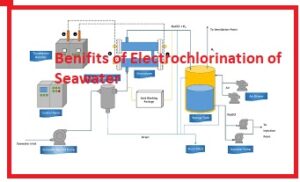 In a certain method, electricity may be extracted from salt water to create hypochlorite, which is a form of chlorine.. This process is called electrochlorination and is commonly used to extract water from the water and kill germs it contains to make it safer for human consumption and consumption. Electrochlorination, because it removes salt from water, is a process commonly used in seawater. When compared to other approaches, this method for purifying saltwater has a lot of advantages.
In a certain method, electricity may be extracted from salt water to create hypochlorite, which is a form of chlorine.. This process is called electrochlorination and is commonly used to extract water from the water and kill germs it contains to make it safer for human consumption and consumption. Electrochlorination, because it removes salt from water, is a process commonly used in seawater. When compared to other approaches, this method for purifying saltwater has a lot of advantages.
Easy to Handle
One of the main advantages of using seawater electrochlorination as a way to extract salt from the water and clean it is that the actual process is easy to accomplish. It includes transferring seawater to a location that has an anode and a diode on each side of it.
When a direct current is delivered into a system, electrolysis takes place and a hypochlorite solution is created.
The final step in this process is to extract the hydrogen that is also produced, leaving the required water containing chlorine.
Less expensive
Seawater is also used extensively during this process because it is less expensive to collect. Seawater used in electrochlorination contains high salinity, usually greater than 05 percent. When seawater with high levels of salt undergoes the electrochlorination process, the final product contains one percent or less of sodium hypochlorite. Although these cleaners are thought to be safe for use on people, they are nonetheless quite powerful in eliminating bacteria and germs from water.
It’s moving
In areas where clean water is scarce, electrochlorination is essential for finding water that can be used by humans. This is a very common procedure used by ships and warships because unlimited drinking water can be made. Small islands and other places with no water treatment facilities or access to fresh water but abundance of seawater are other places where it is commonly utilized.
It works
One of the newest, and most beneficial, applications of electrochlorination is in the third world, where water-borne diseases affect humans. With the goal of offering electrochlorination systems in regions like Africa and the Middle East where dry weather makes it difficult for people to acquire clean water, several services have been developed.
Typhoid, cholera, and diarrhea these disease has vanished in the USA since when first-time chlorine was used in water filter about hundred year ago, and lower-cost electrochlorination systems are starting to accomplish the same in the developing world.
It’s safe
Many environmentalists have resisted drug-inducing processes in the past because they have produced harmful products. Electrochlorination, however, changes the way chlorination is viewed. It is considered an eco-friendly process because the only product produced is hydrogen, which is environmentally safe after it has been successfully removed.
The study could not find a single harmful effect of electrochlorination on the environment. In fact, it is even safer for those administering treatment because the toxic chlorine gas has never been touched. This is because instead of bringing chlorine into water, like other liquids, chlorine is produced in very small amounts through the reaction process itself.
With all the benefits of electrochlorination, including that it is inexpensive, healthy and safe, it is not surprising that this process of producing water used is becoming increasingly popular. It is currently in the process of becoming a chemical process that is being used in many salt and water reduction processes.



